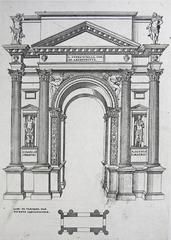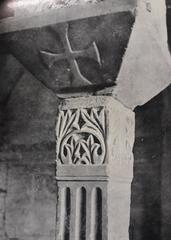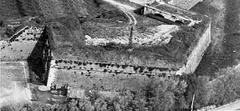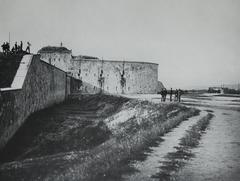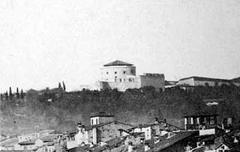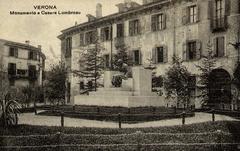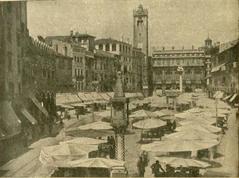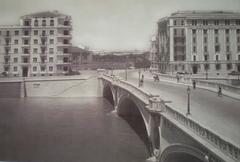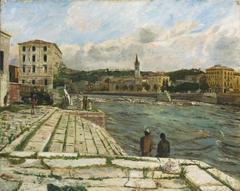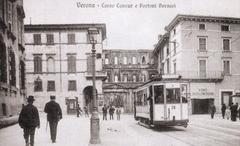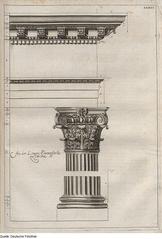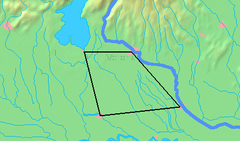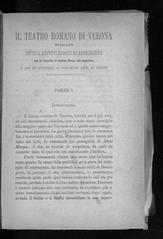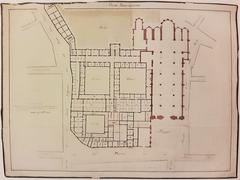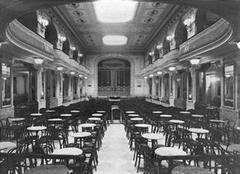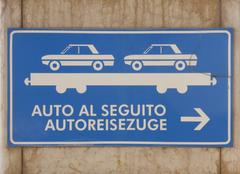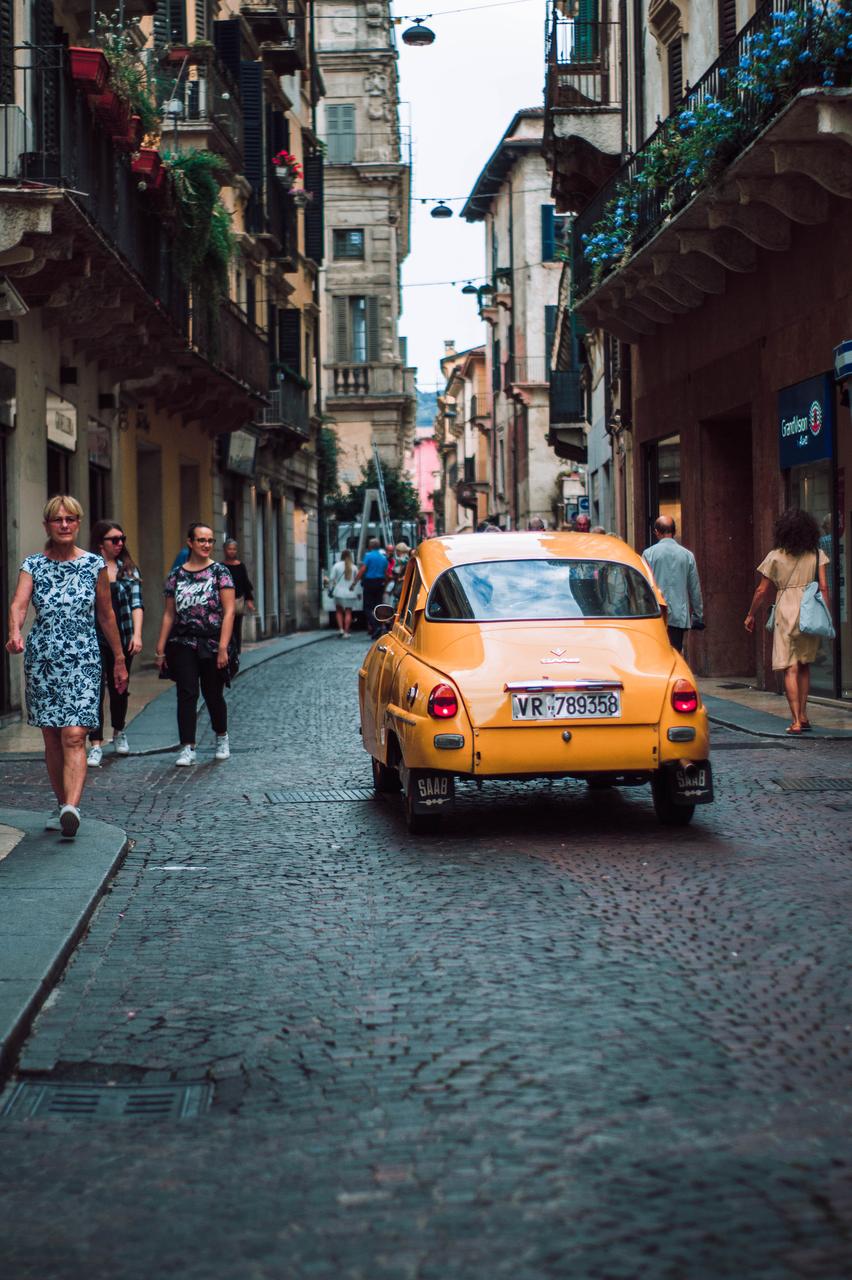
Comprehensive Guide to Visiting Verona, Province of Verona, Italy
Date: 13/08/2024
Captivating Introduction
Welcome to Verona, a city where every cobblestone whispers tales of love, power, and resilience. Imagine standing in the heart of a Roman amphitheater, feeling the echoes of gladiators’ roars and the melodies of modern operas. Verona is not just a city; it’s a living museum that has witnessed the rise and fall of empires, the brushstrokes of Renaissance artists, and the verses of Shakespearean romance. From the Roman ruins of Piazza Bra’s Arena, built in 30 AD, to the medieval fortresses of the Scaligeri dynasty, and the Renaissance masterpieces like the Palazzo della Ragione, Verona is a treasure trove of history and culture (World History Encyclopedia, PlanetWare).
But Verona is more than its ancient stones. It’s a city that wears its heart on its sleeve, inviting you to a balcony where Juliet once stood, to markets where the aroma of Italian coffee mingles with fresh produce, and to festivals that celebrate everything from wine to opera. Every corner of Verona holds a secret, a hidden gem waiting to be discovered. Whether you’re a history buff, a romantic, or an art lover, Verona promises an unforgettable journey through time and culture. So, lace up your walking shoes, grab a Verona Card for access to all the main attractions, and let the city’s charm unfold before you (Full Suitcase, Experto Italy).
Table of Contents
- Dive into the Timeless Charm of Verona
- Unlocking Verona’s Charms: A Journey Through Time and Culture
- Arena di Verona: Where History Meets Harmony
- Juliet’s House: A Balcony of Dreams
- Piazza delle Erbe: The Heartbeat of Verona
- Castelvecchio and Ponte Scaligero: A Fortress of Art and History
- Piazza Bra: The Grand Entrance
- Basilica of San Zeno Maggiore: A Sanctuary of Art and Faith
- Giardino Giusti: A Renaissance Oasis
- Torre dei Lamberti: A Towering Perspective
- Teatro Romano and Archaeological Museum: Echoes of the Past
- Ponte Pietra: A Bridge Through Time
- Santa Maria Antica and Scaliger Tombs: Gothic Grandeur
- Hidden Gems and Local Secrets
- Practical Tips for Visitors
- Seasonal Highlights
- Call to Action
- Cultural Events and Festivals in Verona
- Carnevale di Verona (Verona Carnival)
- Fiera di Sant’Anastasio
- Pietra di Luna (Full Moon Stone)
- Festa della Bora
- Festa di Verona (Feast of Verona)
- Autunno Musicale (Musical Autumn)
- Verona Opera Festival
- Verona Wine Festival
- Verona Christmas Markets
- Visitor Tips for Festivals and Events
- Major Events Calendar
- Conclusion
Dive into the Timeless Charm of Verona
Roman Verona: Where It All Began
Welcome to Verona, a city where history isn’t just in the past—it’s alive and kicking! Picture this: It’s the 2nd century BCE, and Verona is a bustling Roman town. Fast forward to 69 CE, and it’s a ‘colonia,’ a big deal in Roman terms. Verona’s prime spot at the crossroads of key routes between Italy and Northern Europe made it a hotbed of activity. Today, you can still feel the Roman vibes at the Arena in Piazza Bra. This colossal amphitheater, born in the 1st century AD, is the third largest in the Roman world and still hosts jaw-dropping operas every year. Talk about a time machine! (World History Encyclopedia).
But that’s not all. The Roman Theatre and the ancient gates of Borsari and Leoni are like stepping into a history book. These ancient marvels are a testament to Verona’s glory days as a Roman powerhouse (Experto Italy).
Medieval Verona: The Scaligeri Saga
Jumping ahead to the medieval era, Verona was under the spell of the Scaligeri dynasty from the 13th to the 14th centuries. These guys knew how to leave a mark. They built the formidable Castelvecchio and the Ponte Scaligero, not just for defense but to flaunt their power. Today, these structures still stand tall, whispering tales of the Scaligeri’s might (PlanetWare).
The Scaliger Tombs are another must-see. These Gothic masterpieces are the final resting place of the Scaligeri bigwigs. Their legacy is etched into Verona’s medieval skyline, reminding us of the city’s storied past (Britannica).
Renaissance Verona: A Canvas of Creativity
The Renaissance was Verona’s time to shine. The city became an artistic magnet, attracting architectural maestros like Fra Giocondo and Michele Sanmicheli. Their work? Stunning buildings and bastioned town walls that still dazzle today. The Palazzo della Ragione is a prime example of Renaissance brilliance (Italy Chronicles).
Verona’s Renaissance flair is also evident in its churches and palazzos, adorned with intricate frescoes and elaborate designs. The city’s artistic renaissance cemented its reputation as a cultural and architectural hub (PlanetWare).
Venetian and Habsburg Influence: A Melting Pot of Styles
After the Scaligeri era, Verona fell into the hands of the Venetian Republic in the early 15th century. Venetian architecture blended seamlessly with Verona’s medieval and Renaissance gems, adding a new layer to the city’s architectural tapestry (Italy Chronicles).
The 18th century brought Austrian rule, and with it, fortified defenses that still mark Verona’s landscape. The Habsburgs left their mark, adding to Verona’s rich architectural mosaic (Britannica).
Modern Verona: Resilience and Revival
Verona’s modern journey is one of resilience. It played a pivotal role in Italy’s 19th-century defense strategy and joined the Kingdom of Italy in 1866. Despite heavy bombing in World War II, Verona bounced back, restoring its historical landmarks (Italy Chronicles).
Today, Verona is a UNESCO World Heritage Site, celebrated for its urban structure and historical significance. Its Roman, medieval, and Renaissance monuments continue to captivate visitors from around the globe (Wikipedia).
Hidden Gems and Key Historical Sites
Arena di Verona
The Arena di Verona is a showstopper. Built in 30 AD, this Roman amphitheater is not just a relic; it’s a living, breathing venue for operas and concerts. Its massive size and architectural grandeur make it a must-visit for history buffs and art lovers alike (Full Suitcase).
Castelvecchio and Ponte Scaligero
Castelvecchio, a fortress from the Scaligeri era, houses a museum brimming with medieval and Renaissance art. And don’t miss the Ponte Scaligero—this fortified bridge offers breathtaking views of the Adige River and the city (PlanetWare).
Juliet’s House
This house features a balcony that has become a symbol of romance. Explore the house for artifacts related to the timeless love story (Travel Live Learn).
Roman Theatre and Archaeological Museum
The Roman Theatre near the Adige River is another Roman gem. Dating back to the 1st century BCE, it still hosts summer performances. The adjacent Archaeological Museum is a treasure trove of Roman artifacts, including mosaics, sculptures, and inscriptions (Experto Italy).
Insider Tips for Visitors
- Verona Card: If you’re planning to hit multiple historical sites, the Verona Card is your golden ticket. It grants access to the main attractions and includes public transport (Full Suitcase).
- Walking Tours: Verona is best explored on foot. The compact city center is home to many historical gems, and walking tours are a fantastic way to soak in the city’s rich history and architecture (The Travel Folk).
- Best Time to Visit: Spring and fall offer the perfect mix of pleasant weather and fewer crowds. Summer is great for opera enthusiasts looking to catch a performance at the Arena di Verona (Experto Italy).
Verona’s historical significance is a living testament to its vibrant past. From Roman ruins to medieval fortresses, Renaissance artistry, and modern resilience, Verona is a city that wears its history proudly. Ready to explore? Download Audiala for expert insights and hidden gems that will make your Verona adventure unforgettable.
Unlocking Verona’s Charms: A Journey Through Time and Culture
Arena di Verona: Where History Meets Harmony
Picture this: You’re standing in a colossal amphitheater, the echoes of ancient Roman spectacles mingling with the strains of a modern opera. That’s the Arena di Verona for you! Built in the first century AD, this marvel hosts the annual Arena di Verona Opera Festival, a veritable feast for the senses. In 2024, Verdi’s “Aida,” directed by Stefano Poda and conducted by Marco Armiliato, graced the stage, drawing opera lovers from across the globe (Operabase). With a seating capacity of over 15,000, it’s an experience you won’t want to miss!
Juliet’s House: A Balcony of Dreams
Ah, Verona! Home to the most famous love story ever told. At Juliet’s House, you can step into the world of Shakespeare’s “Romeo and Juliet.” Climb up to the iconic balcony, leave a love note on the wall, or strike a pose with the bronze statue of Juliet. Despite its fictional roots, this 14th-century house is a magnet for romantics from all over (Savoring Italy).
Piazza delle Erbe: The Heartbeat of Verona
Imagine strolling through Verona’s oldest square, Piazza delle Erbe, where history and modernity dance together. Surrounded by architectural gems like the Torre dei Lamberti and Palazzo Maffei, this market square is a sensory delight. From the fresh produce at market stalls to the aroma of Italian coffee wafting from nearby cafes, it’s a slice of Veronese life you must savor. Don’t forget to snap a photo by the 1368 Madonna Verona fountain (The Planet D).
Castelvecchio and Ponte Scaligero: A Fortress of Art and History
Step into the medieval era at Castelvecchio, a 14th-century fortress now home to an impressive museum. Marvel at artworks by Pisanello and Paolo Veronese, then cross the Ponte Scaligero for breathtaking views of the Adige River. This fortress and bridge are not just relics; they’re testimonies to Verona’s architectural grandeur (Journey of Exploration).
Piazza Bra: The Grand Entrance
Welcome to Piazza Bra, Verona’s largest square and the gateway to its historic center. Dominated by the Arena di Verona, the square buzzes with life, especially in summer. Enjoy a meal at one of the many cafes and restaurants, or admire landmarks like Palazzo Barbieri and the 17th-century Gran Guardia. It’s the perfect starting point for your Veronese adventure (Visit Verona).
Basilica of San Zeno Maggiore: A Sanctuary of Art and Faith
Step into the spiritual heart of Verona at the Basilica of San Zeno Maggiore. Dedicated to the city’s patron saint, St. Zeno, this Romanesque masterpiece boasts stunning frescoes and famous bronze doors depicting biblical scenes. Literary buffs will be thrilled to know that the crypt is rumored to be the setting for Romeo and Juliet’s secret wedding (Savoring Italy).
Giardino Giusti: A Renaissance Oasis
Escape the city’s hustle and bustle at Giardino Giusti, a beautifully manicured Renaissance garden. Wander through its hedges, statues, and fountains, explore its grottoes, and drink in panoramic views of Verona from the terrace. This garden has inspired artists and writers for centuries and offers a serene retreat (The Planet D).
Torre dei Lamberti: A Towering Perspective
For the best views in Verona, climb the Torre dei Lamberti. Standing tall at 84 meters, this medieval tower offers a panoramic vista of the city’s rooftops and squares. Whether you take the 368 steps or opt for the elevator, the reward is a breathtaking view. The tower also hosts exhibitions showcasing Verona’s rich history (Journey of Exploration).
Teatro Romano and Archaeological Museum: Echoes of the Past
Step back in time at the Teatro Romano, an ancient Roman theater still alive with performances during the summer, especially the Verona Jazz Festival. Next door, the Archaeological Museum houses a treasure trove of Roman artifacts, from mosaics to inscriptions, offering a deep dive into Verona’s ancient history (Savoring Italy).
Ponte Pietra: A Bridge Through Time
Cross the Ponte Pietra, a Roman arch bridge built in 100 BC, and experience Verona’s layered history firsthand. Rebuilt numerous times due to floods and wars, this bridge blends Roman and medieval elements, offering stunning views of the Adige River and surrounding hills (The Planet D).
Santa Maria Antica and Scaliger Tombs: Gothic Grandeur
Discover the Gothic splendor of Santa Maria Antica and the Scaliger Tombs. This 12th-century Romanesque church is home to the elaborately decorated tombs of the Scaliger family, who once ruled Verona. These Gothic monuments are a must-see for art and history enthusiasts (Journey of Exploration).
Hidden Gems and Local Secrets
- Verona’s Underground Wonders: Explore the city’s hidden layers at the Scavi Scaligeri, an archaeological site beneath the heart of Verona.
- Cafe Culture: Enjoy a cappuccino at Caffè Filippini, a local favorite since 1901.
- Street Art: Discover vibrant murals in the Veronetta district, showcasing the city’s contemporary creative spirit.
Practical Tips for Visitors
- Best Time to Visit: Late spring (May) and early autumn (September to early October) offer pleasant weather and fewer crowds. Summer is vibrant but can be hot and busy (Savoring Italy).
- Getting Around: Verona is best explored on foot or by bike. Public transportation options include buses and taxis, but walking lets you soak in the city’s charm (Along Dusty Roads).
- Accommodation: Book in advance, especially during peak season. From luxury hotels to budget-friendly hostels, Verona caters to all travelers (Journey of Exploration).
Seasonal Highlights
- Spring: Witness the blooming flowers at Giardino Giusti.
- Summer: Enjoy opera under the stars at Arena di Verona.
- Autumn: Stroll through Piazza delle Erbe amidst the fall foliage.
- Winter: Experience the festive Christmas markets in Piazza Bra.
Call to Action
Ready to uncover Verona’s secrets? Download Audiala, your ultimate tour guide app. With expertly crafted audio guides and insider tips, Audiala transforms your journey into an unforgettable adventure. Explore Verona like never before—download Audiala today to unlock the city’s hidden gems and stories!
Cultural Events and Festivals in Verona
Carnevale di Verona (Verona Carnival)
Imagine stepping into a city where ancient history and vibrant modern culture dance together under the Italian sun. The Carnevale di Verona is one of the most anticipated events in the city, kicking off the festival calendar every February. Picture this: you’re nibbling on frittelle at the Verona Carnival, wondering if the guy in the lion mask is the same one who sold you gelato earlier. This centuries-old tradition features elaborate parades, masquerade balls, and colorful street performances. Visitors can indulge in traditional frittelle (fried dough balls) while enjoying the vibrant atmosphere. The carnival is a celebration of life and culture, drawing both locals and tourists into its festive embrace.
Fiera di Sant’Anastasio
Held annually from April 25th to May 13th, the Fiera di Sant’Anastasio is one of Europe’s oldest fairs, dating back over 800 years. This event features various market stalls selling everything from food and wine to handmade crafts. Traditional games and entertainment are also part of the fair,making it a family-friendly event. The fair is a testament to Verona’s rich history and its enduring cultural traditions.
Pietra di Luna (Full Moon Stone)
The Pietra di Luna event takes place on June 21st, the summer solstice. This unique spectacle occurs at the ancient Roman amphitheater, where a full moon appears through the arena arch. Feel the cobblestones under your feet, hear the operatic arias floating through the air, and savor the rich taste of Amarone wine. The event is a magical experience, combining Verona’s historical significance with natural beauty. It’s a must-see for anyone visiting the city during this time.
Festa della Bora
Typically held on the first Sunday of August, the Festa della Bora celebrates the “bora,” a strong wind that blows from the northeast into Verona. The festival features music, food, and games, as well as a traditional boat race on Lake Garda. This event is a unique celebration of Verona’s natural elements and offers a different perspective on the city’s cultural landscape.
Festa di Verona (Feast of Verona)
The Festa di Verona takes place in late August and early September, honoring the city’s patron saint, Saint Mary of Zante. The festivities include processions, concerts, fireworks, and a historical reenactment in Piazza Erbe. This event is a blend of religious devotion and cultural celebration, providing a deep insight into the city’s traditions and community spirit.
Autunno Musicale (Musical Autumn)
From October to December, Verona transforms into a music lover’s paradise with the Autunno Musicale. This series of classical music concerts is held in various venues, including the ancient Roman amphitheater and several churches throughout the city. The event attracts renowned musicians and offers a serene cultural experience amidst Verona’s historical backdrop.
Verona Opera Festival
One of the most prestigious events in Verona is the Verona Opera Festival, held annually at the Verona Arena. This festival runs from June to September and features world-class opera performances in the ancient Roman amphitheater. The festival is a significant cultural event, attracting opera enthusiasts from around the globe. The combination of high-quality performances and the historical setting makes it a unique experience.
Verona Wine Festival
If you’re visiting in spring, the Verona Wine Festival is a must-attend event. The festival showcases the region’s finest wines, with tasting tours available in Valpolicella throughout the year. This event is an excellent opportunity to explore Verona’s rich viticultural heritage and enjoy some of Italy’s best wines.
Verona Christmas Markets
During the winter months, Verona’s Christmas Markets in Piazza dei Signori are a festive highlight. The markets are filled with holiday lights, decorations, and delicious local treats. Visitors can enjoy a warm and festive atmosphere, making it a perfect way to experience Verona’s charm during the holiday season.
Visitor Tips for Festivals and Events
- Book Accommodation in Advance: Given Verona’s popularity, especially during festival seasons, it’s advisable to book your accommodation well in advance. This ensures you have a comfortable place to stay that suits your budget and preferences (Timeless Travel Steps).
- Consider Peak Seasons: Be mindful of peak tourist seasons, such as summer and major holidays, when Verona can get crowded. If possible, plan your visit during the shoulder seasons (spring and autumn) to enjoy pleasant weather and fewer crowds (Timeless Travel Steps).
- Join Guided Walking Tours: To make the most of your Verona experience, consider joining guided walking tours. Knowledgeable guides can provide historical insights and take you to hidden gems you might miss on your own (Timeless Travel Steps).
- Explore Surrounding Areas: While in Verona, take advantage of its strategic location to explore nearby attractions like Venice or Lake Garda. Day trips to these destinations can enhance your Italian adventure (Timeless Travel Steps).
- Verona Card: Consider getting a Verona Card, which offers free or discounted entry to many of the city’s museums and attractions such as the Verona Arena and Lamberti Tower. It can save you money and provide convenient access to Verona’s cultural heritage.
- Reservations for Popular Attractions: For some popular spots and upscale restaurants, making a reservation in advance is a good idea, especially during peak tourist seasons (Timeless Travel Steps).
- Best Time to Visit Juliet’s Balcony: To avoid large crowds, consider visiting Juliet’s House early in the morning, before 11:00 AM, or later in the afternoon from 4:30 PM onwards (Timeless Travel Steps).
Major Events Calendar
Verona’s event calendar is packed with prestigious, internationally renowned events. From the famous opera festival to modern pop concerts, from Verona in Love to the joyous Verona Carnival, every season has something to offer. For a comprehensive list of events, visit the Verona Tourist Office website.
Conclusion
Verona’s cultural events and festivals offer a rich tapestry of experiences that celebrate the city’s history, art, music, and gastronomy. Whether you’re a fan of classical music, opera, or traditional fairs, Verona has something to offer every visitor. By planning your visit around these events, you can ensure a memorable and enriching experience in this enchanting Italian city. Ready to uncover Verona’s secrets? Download Audiala now and let your adventure begin!
References
- World History Encyclopedia. (n.d.). Verona. World History Encyclopedia.
- Experto Italy. (n.d.). Verona City Guide: Historical Sights, Culture, Events, Gastronomy. Experto Italy.
- PlanetWare. (n.d.). Tourist Attractions in Verona. PlanetWare.
- Savoring Italy. (n.d.). Verona, Italy. Savoring Italy.
- Full Suitcase. (n.d.). Best Things to Do in Verona. Full Suitcase.
- The Planet D. (n.d.). Best Things to Do in Verona. The Planet D.
- Mad Traveller. (n.d.). Festivals and Events in Verona. Mad Traveller.
- Timeless Travel Steps. (n.d.). One Day in Verona, Italy: 24-Hour Itinerary. Timeless Travel Steps.




